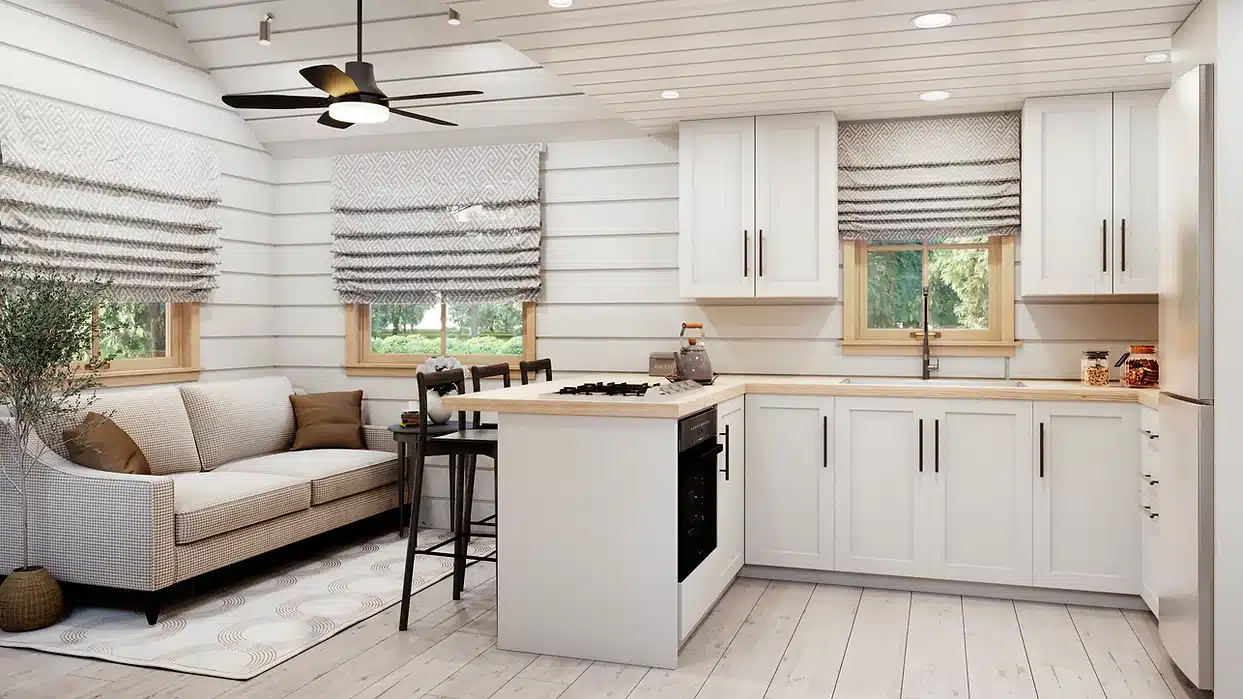Table of Contents
- Introduction
- Options for Energy-Efficient Heating and Cooling Systems
- Options for Energy-Efficient Lighting
- LED Lights
- Motion Sensors
- Skylights
Introduction
Tiny homes are becoming increasingly popular due to their affordability and convenience. However, many people are unaware of the ways to make them energy efficient. This article provides information on how to find tiny homes for sale near you and how to make them energy efficient. It discusses options for heating and cooling systems, energy-efficient lighting, appliances, and renewable energy sources like solar panels. Additionally, it encourages readers to prioritize sustainability when it comes to their tiny homes in order to reduce their carbon footprint and mitigate the effects of climate change. Lastly, it offers a free buyers guide to help readers find inspiration and information when looking for a tiny home.
Options for Energy-Efficient Heating and Cooling Systems
When it comes to heating and cooling a tiny home, there are several options available. Mini-split heat pumps are a great choice for tiny homes due to their space-saving design and energy efficiency. They work by transferring heat from one area to another, and can be used to both heat and cool the home. Another option is radiant floor heating, which uses electric coils or hot water pipes installed beneath the flooring to provide comfortable warmth throughout the home. Lastly, high-efficiency HVAC systems are also an option for tiny homes. These systems utilize air conditioning and heating technologies that use less energy than traditional HVAC systems, making them an ideal choice for energy-conscious homeowners.
No matter which type of system you choose, it is important to make sure that it is properly installed and maintained in order to maximize its efficiency. Additionally, it is important to consider other factors such as the size of your home, climate, and budget when selecting a heating and cooling system for your tiny home. With the right system in place, you can ensure that your tiny home is comfortable all year round while conserving energy.
Main Idea: Several energy-efficient heating and cooling options are available for tiny homes, including mini-split heat pumps, radiant floor heating and high-efficiency HVAC systems.
Options for Energy-Efficient Lighting
When it comes to energy efficiency in tiny homes, lighting is an important factor to consider. In order to reduce energy consumption and save money on electricity bills, there are several options for energy-efficient lighting available.
LED Lights
LED lights are the most efficient type of lighting available and can last up to 25 times longer than traditional incandescent bulbs. Not only do they use less energy than traditional bulbs, but they also produce less heat and are available in a variety of colors and styles. LEDs are also dimmable and can be used in combination with motion sensors to further reduce energy usage.
Motion Sensors
Motion sensors are a great way to reduce energy usage by automatically turning lights off when not in use. They can be installed on walls or ceilings and will detect motion within a certain range, allowing lights to be turned on or off depending on whether someone is in the room or not. This is especially helpful in tiny homes where space is limited and every bit of energy saved counts.
Skylights
Skylights can be an excellent source of natural light for tiny homes, reducing the need for artificial lighting during the day. Skylights come in a variety of sizes and shapes and can be installed in almost any space, allowing natural light to enter the home without taking up too much space or compromising the design of the home. Additionally, they can help reduce heating costs by allowing sunlight to naturally heat up the home during the day.
|
Lighting Option
|
Description
|
|
LED Lights
|
Long lasting, energy efficient, and come in a variety of colors and styles.
|
|
Motion Sensors
|
Automatically turn lights on/off when motion is detected.
|
|
Skylights
|
Allow natural light to enter the home and reduce heating costs.
|
Appliances for Tiny Homes
When it comes to appliances for tiny homes, there are a variety of options available that can help make your home energy efficient and reduce your carbon footprint. One of the most popular choices is an induction cooktop, which is more efficient than traditional gas or electric cooktops. It also produces less heat, so it won’t heat up your tiny house too much during the summer months.
Another great option is a heat pump dryer, which uses significantly less energy than standard dryers. This type of dryer works by extracting moisture from the air and then using that moisture to dry clothes. This makes it much more energy-efficient than traditional dryers, as well as quieter and more convenient.
Energy-efficient dishwashers are also great additions to tiny homes. These dishwashers use significantly less water and energy than traditional models, making them a great choice for those looking to save money and reduce their environmental impact.
Finally, solar panels are a great option for powering your tiny home. Solar panels can provide clean, renewable energy that can help you reduce your electricity bill and your carbon footprint. Additionally, many states offer incentives for installing solar panels in homes, so be sure to check with your local government to see what incentives may be available.
By choosing energy-efficient appliances like induction cooktops, heat pump dryers, energy-efficient dishwashers, and solar panels, you can make your tiny home more sustainable while also reducing your carbon footprint and helping mitigate the effects of climate change.
Conclusion
Tiny homes are a great way to reduce your carbon footprint and live sustainably. By incorporating energy-efficient heating and cooling systems, lighting, appliances, and renewable energy sources like solar panels, you can make your tiny home even more eco-friendly. Prioritizing sustainability when it comes to your tiny home is essential to mitigate the effects of climate change. To get started on the journey of finding your perfect tiny home,


